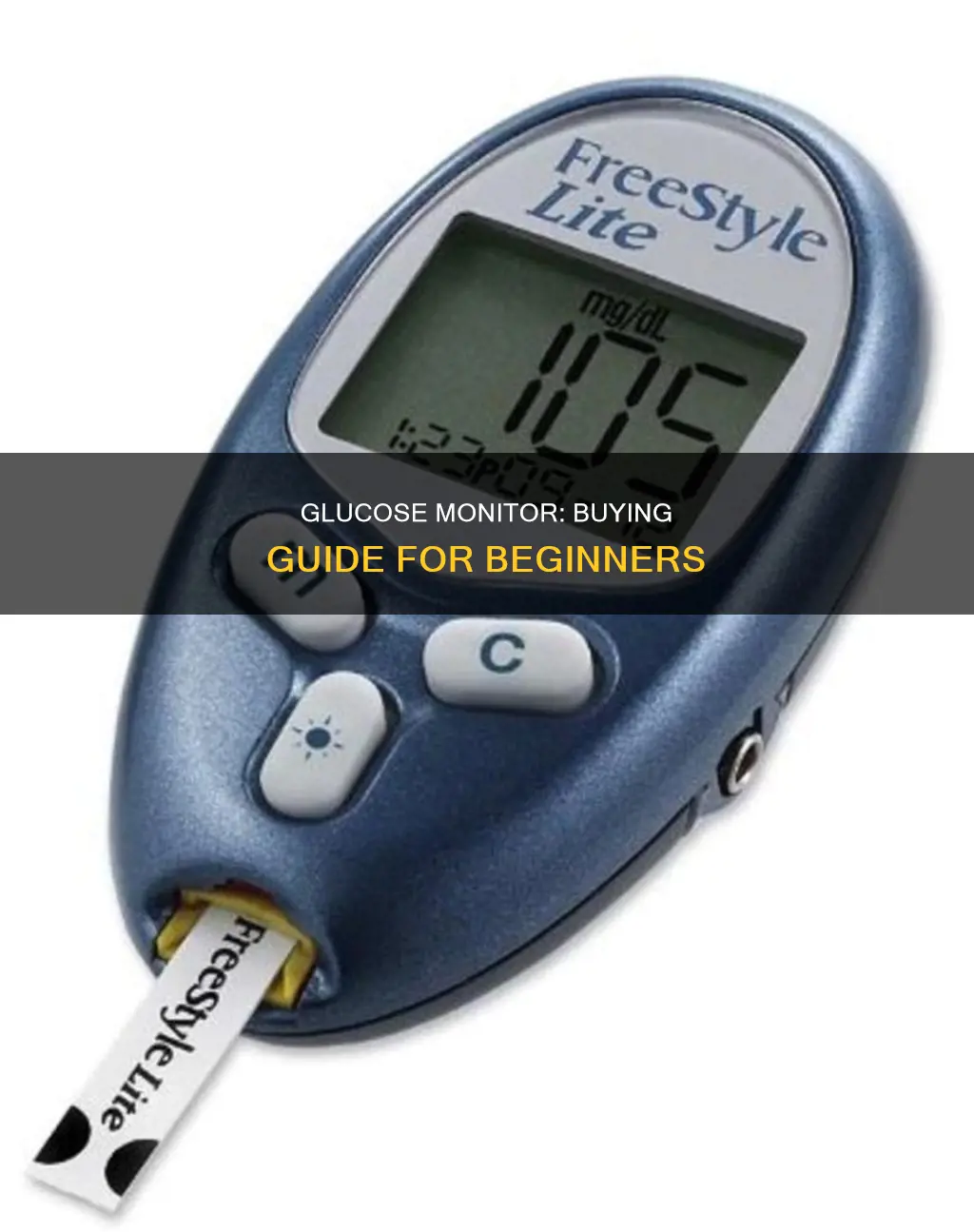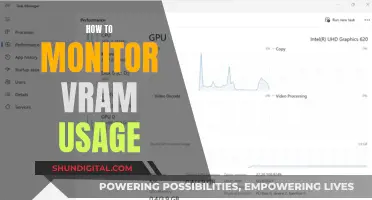
Diabetes is a lifelong condition that requires constant management to avoid major health problems. One of the most important aspects of managing diabetes is regularly testing your blood glucose levels with a glucose monitor. By testing your blood sugar, you can adjust your diet, exercise routine, and treatment plan to prevent complications and reduce the risk of seizures, kidney disease, nerve damage, and blindness.
There are many options available when it comes to purchasing a glucose monitor, and it's important to consider your particular needs, lifestyle, and budget. In this article, we will provide an overview of the different types of glucose monitors available, the features to look for, and the cost considerations to keep in mind when purchasing one. We will also discuss the importance of testing your blood glucose levels and how it can improve your quality of life.
| Characteristics | Values |
|---|---|
| Purpose | To monitor blood glucose levels to manage diabetes |
| Testing | Requires a lancing tool to prick the fingertip and obtain a blood sample |
| Testing Frequency | A minimum of once a day, but can be up to 4 times a day |
| Testing Time | Results can take less than 6 seconds to around 15 seconds |
| Testing Location | Can be done at home or with a diabetes educator |
| Testing Costs | The monitor can cost $15-$60, with test strips costing around $100 per month |
| Additional Costs | Lancets, control solutions, carrying cases, etc. |
| Insurance Coverage | Medicare and private insurance may cover some costs; check with your insurance provider |
| Calibration | Requires calibration to each batch of test strips, either manually or via a removable code chip |
| Data Storage | Some monitors store results, with the capacity ranging from 360 to 90-day averages |
| Unit Size | Varies, with compact meters available for on-the-go testing |
| Battery Type | Typically uses watch-style or medical batteries, but some use AAA batteries |
| Blood Sample Size | Modern monitors require less than 1 microliter of blood, reducing pain |
| Additional Features | Markers and flags for pre/post-meal/exercise readings, software kits for data visualization |
What You'll Learn

Where to buy a glucose monitor
You can buy a glucose monitor at your local pharmacy or at online pharmacies. Some online retailers that sell glucose monitors include Amazon, Walgreens, and Dario.
When buying a glucose monitor, it is important to shop around for bargains and the best prices. The price of a glucose meter depends on the features and brand you select. You should be able to buy one for $40 to $60.
It is also important to consider the cost of test strips, which can be expensive, especially if you are using them multiple times a day.
Connecting Your MacBook Pro to an HDMI Monitor
You may want to see also

Cost of a glucose monitor
The cost of a glucose monitor varies depending on the type of monitor and the features included. Here is a breakdown of the costs associated with glucose monitors:
Traditional Glucose Monitors:
Without insurance, a traditional glucose monitor typically costs around $40 to $60. The annual cost of using a glucose monitor can range from $1,000 to $3,000, including the cost of the device, test strips, and other supplies. Test strips can cost around $100 per month, and lancets can also add to the overall cost. It is important to note that some insurance companies may cover the cost of the monitor, but not the test strips, or vice versa.
Continuous Glucose Monitors (CGMs):
CGMs are more expensive than traditional glucose monitors, with costs ranging from less than $2,000 to about $7,000 per year without insurance or discounts. The average yearly cost for a CGM system is estimated to be between $1,200 and $3,600. CGMs typically include sensors, a receiver or a connected smart device, and sometimes a transmitter. Using your smartphone as a receiver can help reduce the cost. Medicare and some insurance plans cover CGMs and their associated supplies for people with Type 1 diabetes, and some insurers are starting to cover CGMs for Type 2 diabetes patients who do not use insulin.
Factors Affecting Cost:
When considering the cost of a glucose monitor, it is important to look beyond the retail price of the device itself. The ongoing cost of test strips, which can range from $18 to $184 per 100 test strips, can make blood glucose monitoring expensive. Replacement lancets and batteries, if required, are also additional expenses to factor in. Additionally, some glucose meters have specific features that may influence the cost, such as data storage capacity, test time, unit size, and blood sample size.
Troubleshooting an ASUS monitor: Power issues and solutions
You may want to see also

Glucose monitor features
When choosing a glucose monitor, there are several features to consider. Here are some key aspects to look out for:
Data Storage
A glucose monitor that stores your test results can be very useful for tracking your blood sugar levels over time. Some monitors can store at least 360 test results, while others may offer more memory. This feature is especially beneficial if you check your blood glucose frequently. Additionally, some monitors can track the average of your readings over 7, 14, or 30 days, providing a more comprehensive view of your blood sugar control.
Test Time
The time it takes for a glucose monitor to provide a reading can vary. While a few seconds may not seem significant, if you're testing multiple times a day, a faster monitor can save time and be more convenient. Ideally, a monitor should provide results in 5 seconds or less.
Markers and Flags
Some glucose monitors have features that allow you to mark whether a reading was taken before or after a meal or physical activity. This can help you understand how these factors influence your blood sugar levels.
Unit Size
If you need to test your blood sugar levels while on the go, consider a compact and portable glucose monitor. Larger models may store multiple test strips, making them bulkier but potentially more convenient for home testing, especially for individuals with dexterity or vision difficulties.
Blood Sample Size
The amount of blood required for testing varies among glucose monitors. More advanced monitors require smaller blood samples, making the testing process less painful. If you are sensitive to lancing, look for a monitor that needs less than 1 microliter of blood.
Connectivity and Compatibility
Some glucose monitors can connect to your smartphone or other devices via Bluetooth or apps. This allows you to track your blood sugar data, set alerts, and even integrate with other health apps or devices. If you intend to use this feature, ensure the monitor is compatible with your device.
Cost
In addition to the cost of the monitor itself, consider the ongoing cost of test strips and replacement lancets. These can add up to a significant expense, especially if you test multiple times a day. Check with your insurance provider to see if certain brands or test strips are covered under your plan.
Mastering Black Level Calibration on LCD Monitors
You may want to see also

Glucose testing
There are a variety of blood glucose meters available in the market, ranging in price and features. Here are some important factors to consider when purchasing a glucose monitor:
Cost
The cost of the meter itself is not the only expense to consider. The ongoing cost of test strips, which you will use multiple times a day, can add up to a significant amount. Test strips can range from $18 to $184 per 100, and you may also need to purchase replacement lancets.
Insurance Coverage
Medicare covers some diabetes-related supplies, and private insurance might cover part of the cost. Check with your insurance provider to see if there are specific brands of meters and test strips that are covered, and find out how many test strips are covered per month.
Automatic Coding
Some glucose meters require manual calibration to each batch of test strips, either by entering a code or downloading an app. Other models use a removable code chip for calibration, which can be more convenient and reduce the risk of inaccurate results.
Data Storage
Look for a meter that can store a significant number of test results, especially if you plan to test your blood glucose frequently. Some meters also track the average of your readings over time, giving you an overall view of your blood sugar control.
Test Time
The time it takes for the meter to provide a reading is also an important factor, especially if you will be testing multiple times a day. A faster test time, such as 5 seconds or less, can be more convenient and desirable.
Markers and Flags
Some meters have features that allow you to note whether a reading was taken before or after a meal or exercise, which can be helpful for tracking patterns and trends.
Unit Size
If you need a portable meter that you can use on the go, look for a compact model. Larger units may store multiple strips, making testing more convenient, especially for those with dexterity or vision difficulties.
Blood Sample Size
Today's glucose meters require smaller blood samples than older models, making the testing process less painful. If you are sensitive to lancing, look for a meter that requires less than 1 microliter of blood.
By considering these factors, you can choose a glucose monitor that best suits your needs, budget, and lifestyle. Remember to consult with your doctor or diabetes educator to ensure you are selecting an appropriate model for your specific situation.
Monitoring Data Usage: TP-Link Router Guide
You may want to see also

Glucose monitor insurance coverage
In the United States, diabetes is the sixth leading cause of death and costs the nation an estimated $170 billion annually. As a result, 46 states have mandated that insurers must cover diabetes medicine, supplies, and equipment. However, you may need to engage in a letter-writing campaign to get your health insurer to pay for certain medical devices.
Medicare Part B (Medical Insurance) covers blood glucose (blood sugar) monitors as durable medical equipment (DME) prescribed by a doctor for use at home. After meeting the Part B deductible, you pay 20% of the Medicare-approved amount (if your supplier accepts assignment). Medicare pays for different kinds of DME in different ways, and you may need to rent or buy the equipment. It is important to ask a supplier if they participate in Medicare before obtaining DME. If suppliers are participating in Medicare, they must accept assignment, meaning they can only charge you the coinsurance and Part B deductible for the Medicare-approved amount. If suppliers do not participate and do not accept assignment, you may have to pay the full cost of the DME.
Private insurance might cover some of the costs of a glucose monitor. Check to see if there are specific brands of meters and test strips that your insurance covers and find out how many test strips, if any, are covered per month. Your strip coverage may depend on factors such as whether you use insulin.
Some glucose monitoring systems, such as the Dario Blood Glucose Monitoring Starter Kit, offer unlimited blood glucose strip and lancet membership plans. Additionally, many members get coverage through their FSA/HSA plans or with third-party healthcare integrations.
Unlocking 144Hz: Setting Up Your ASUS Monitor for Smoothness
You may want to see also







